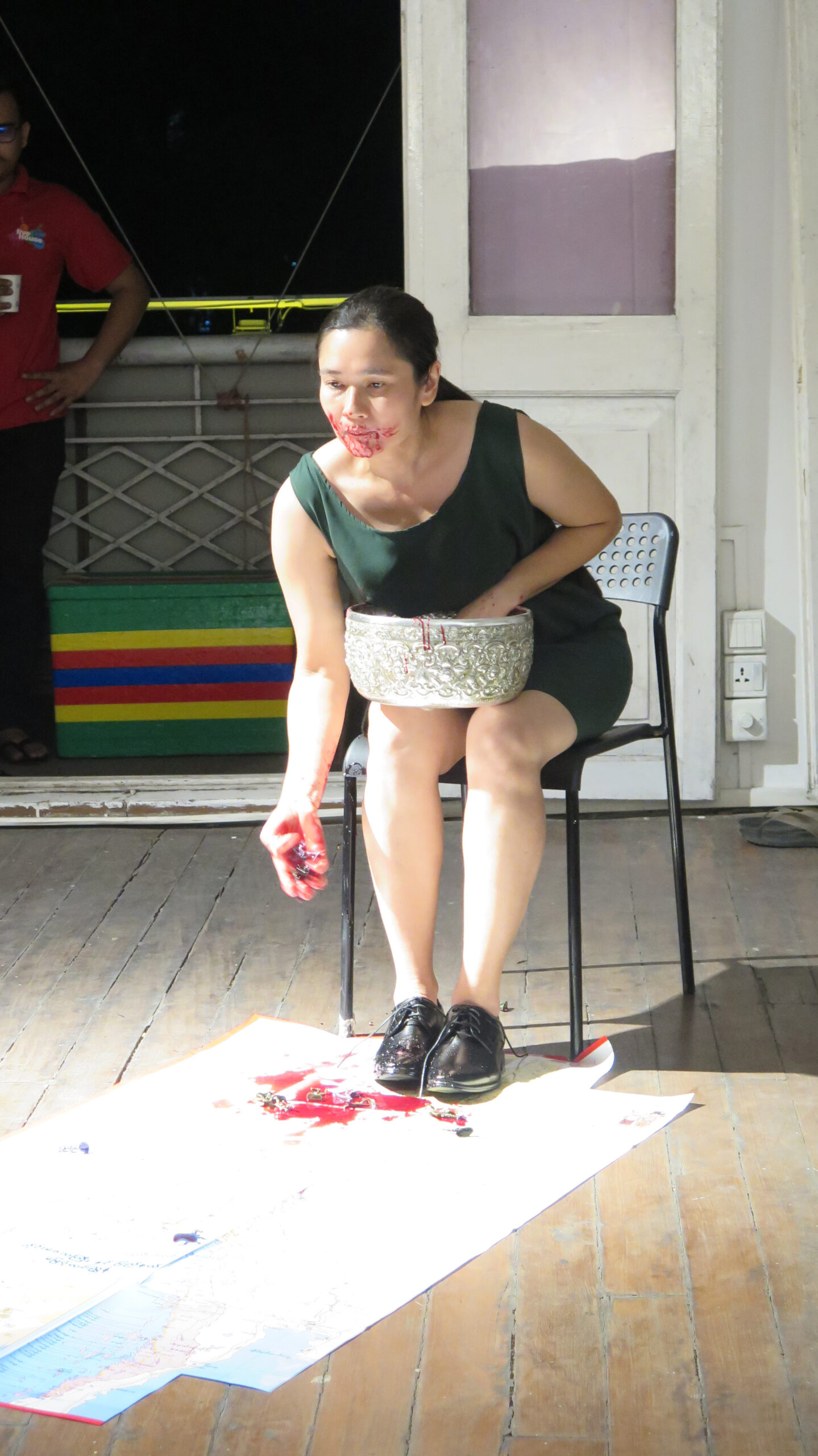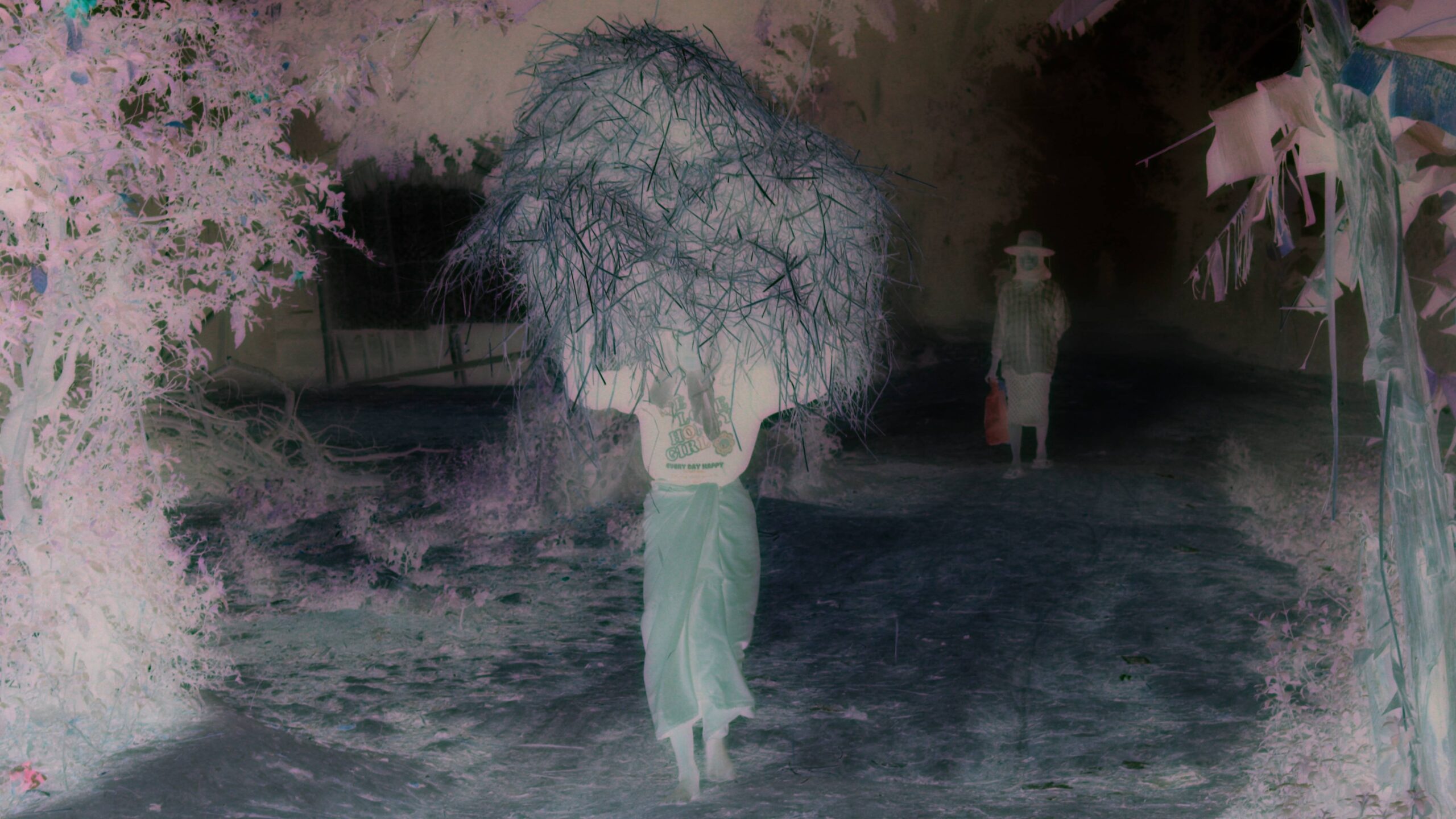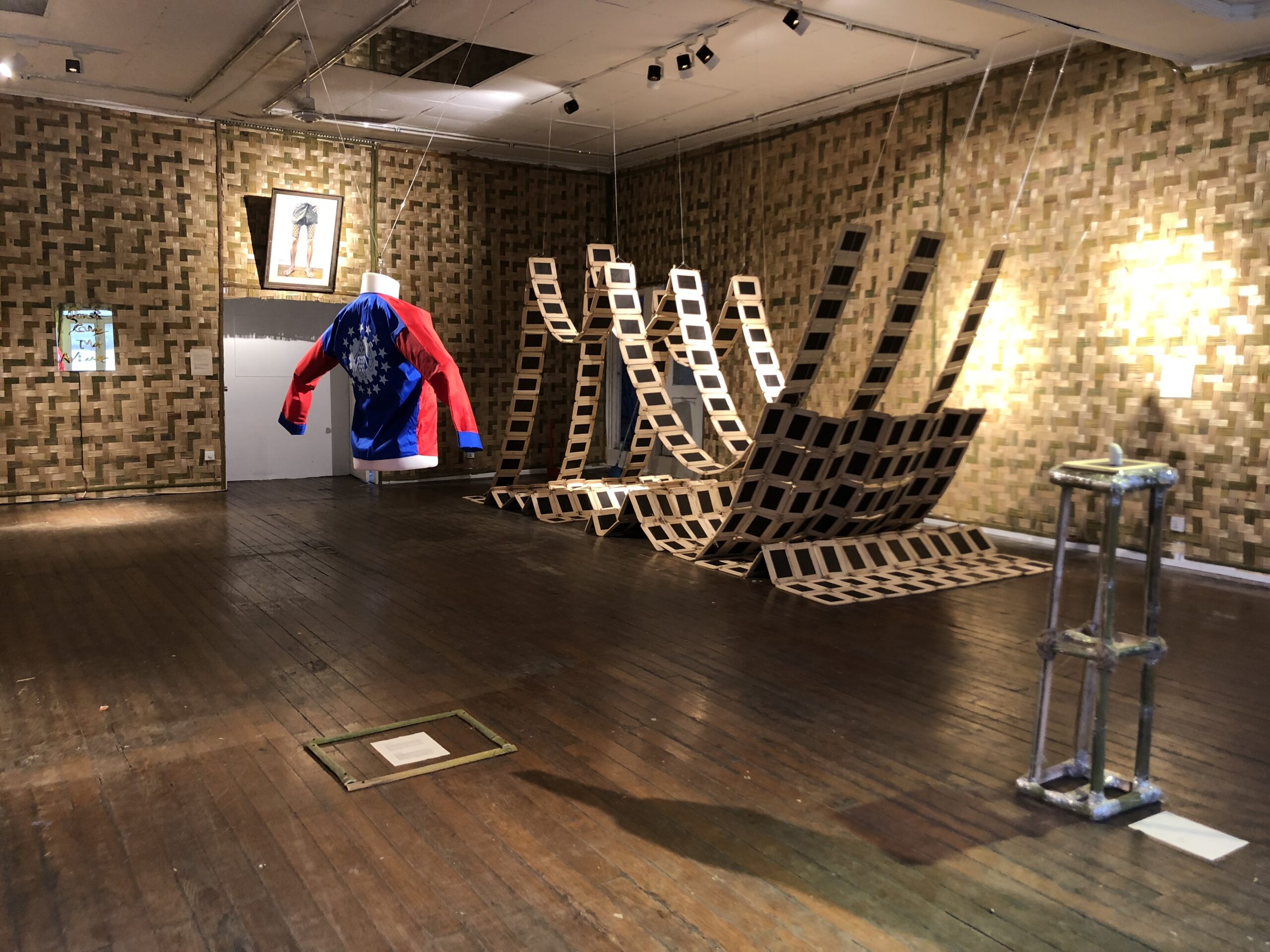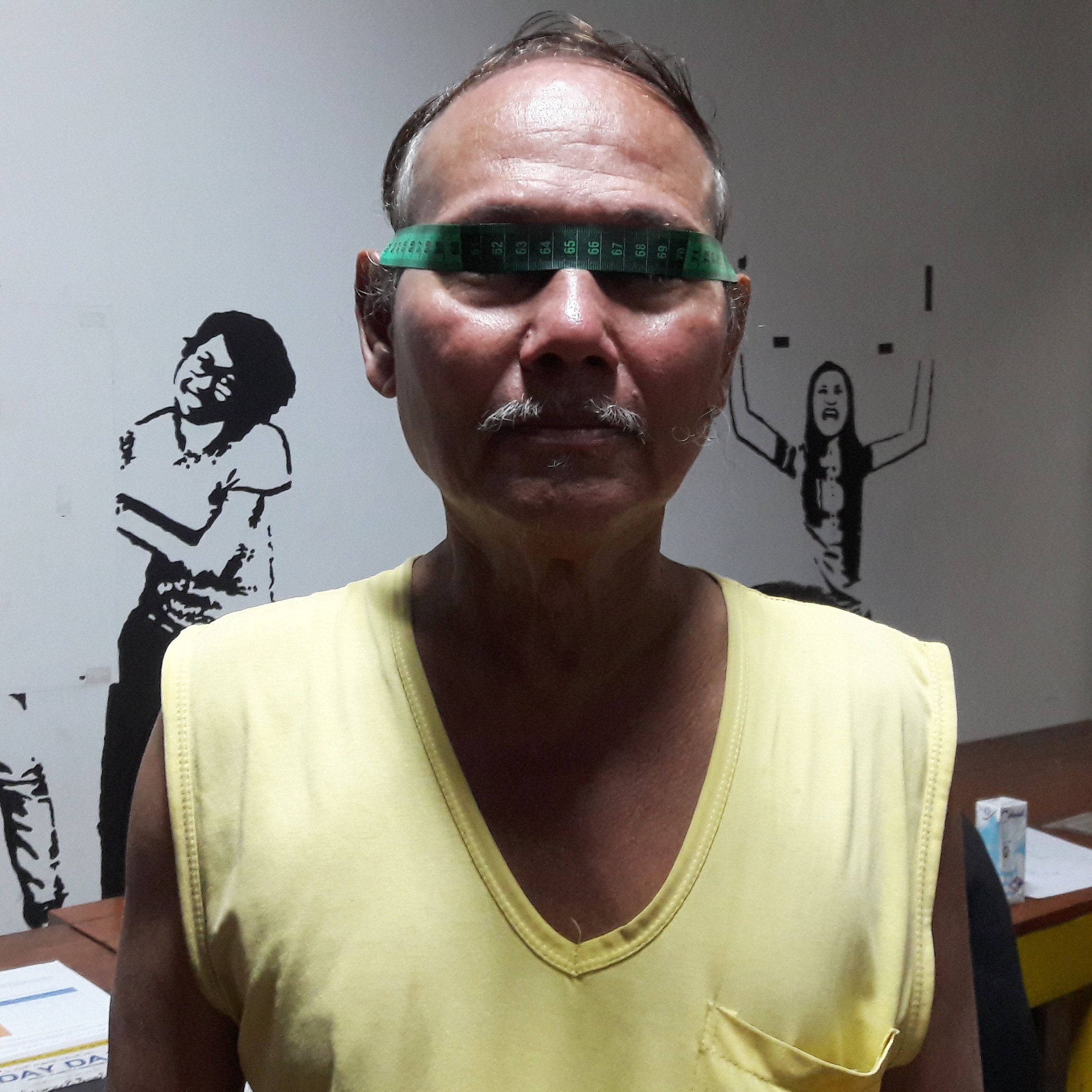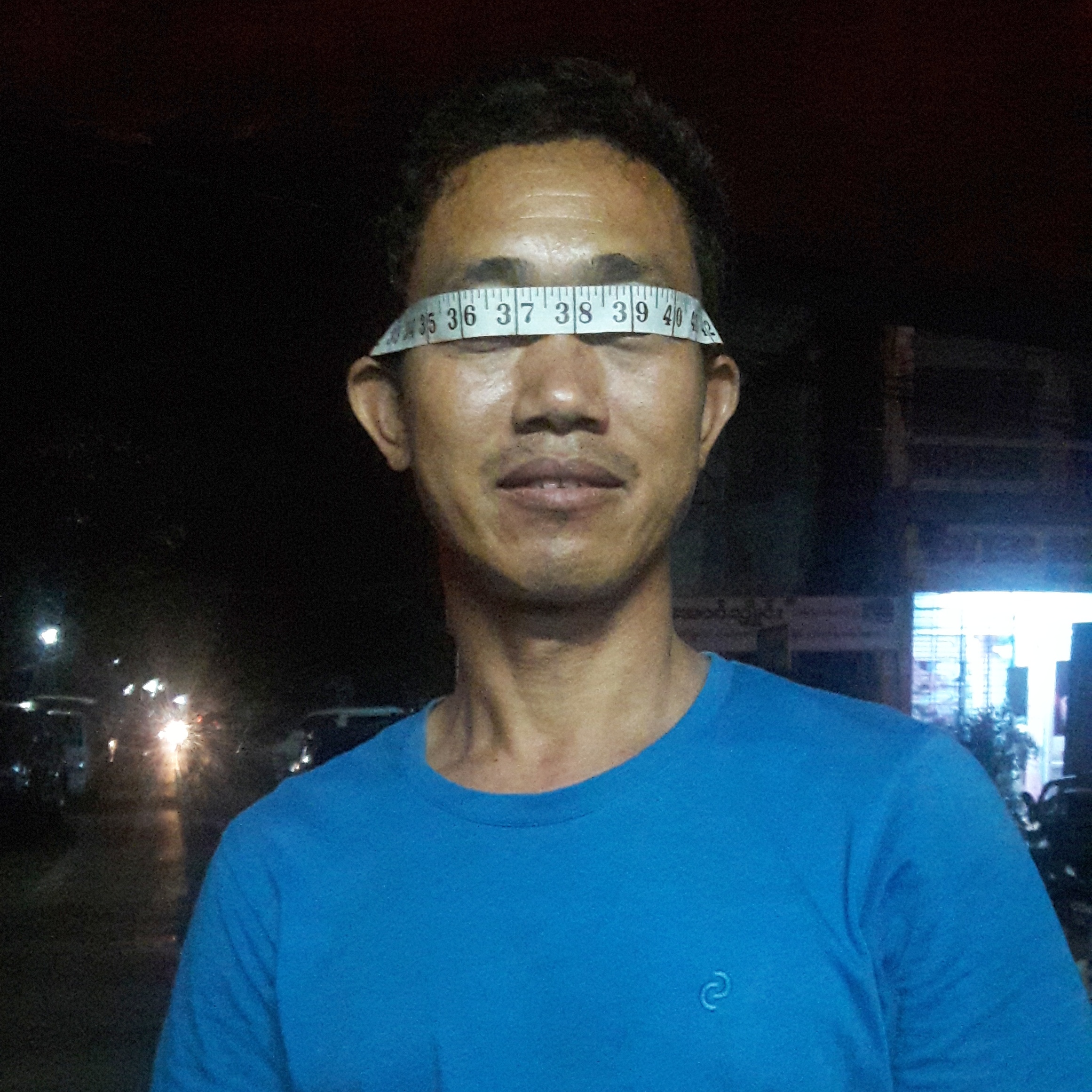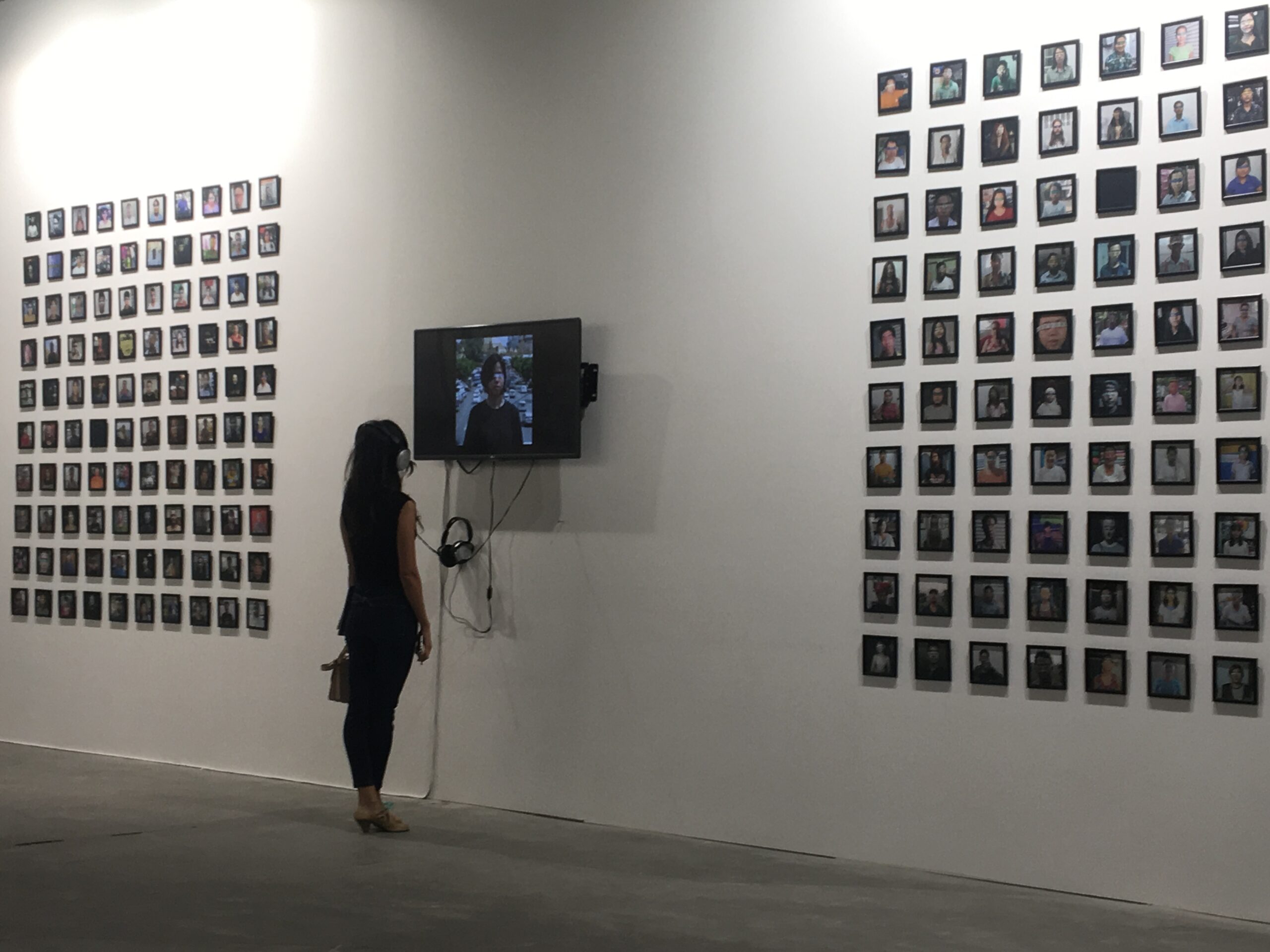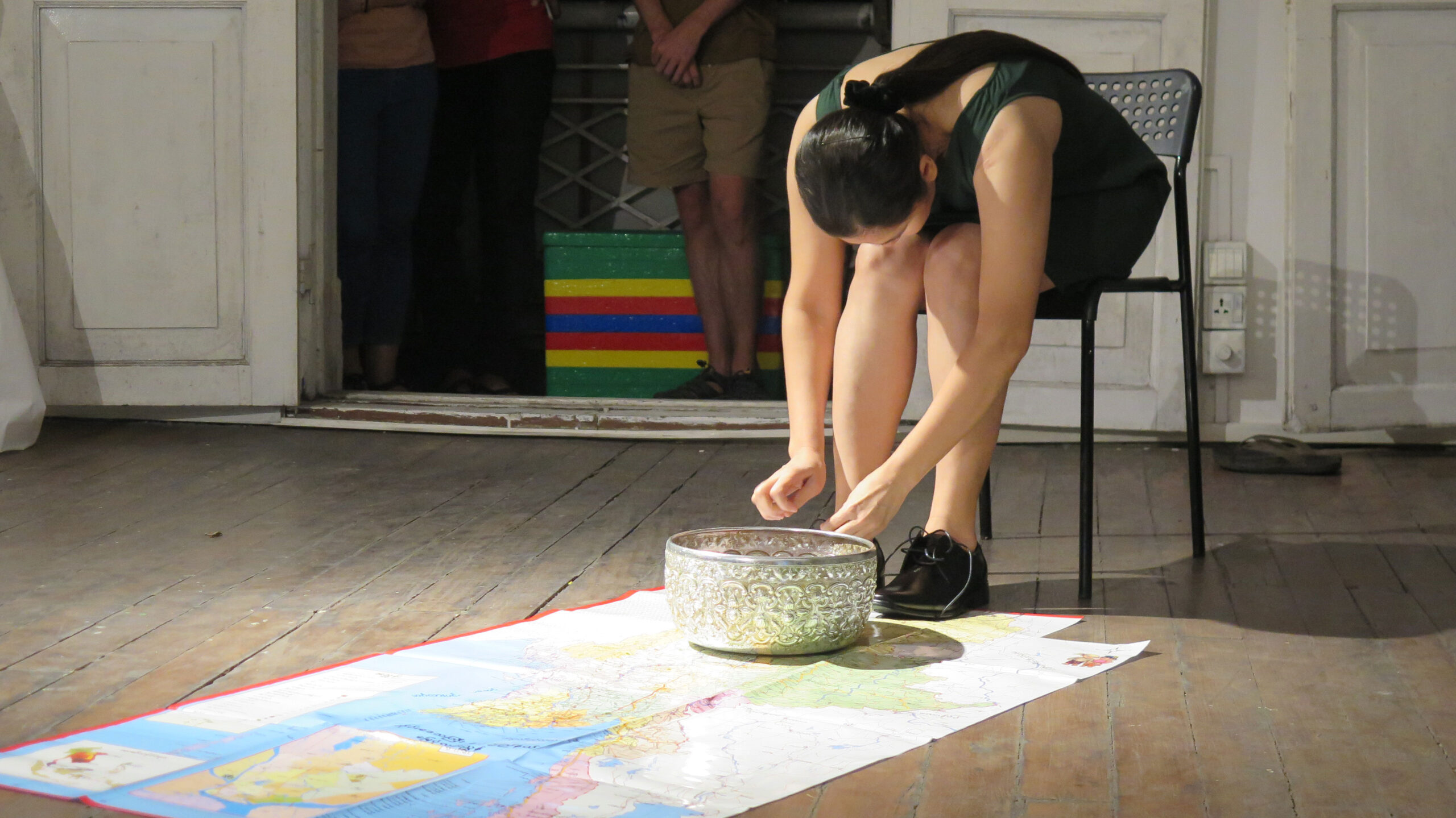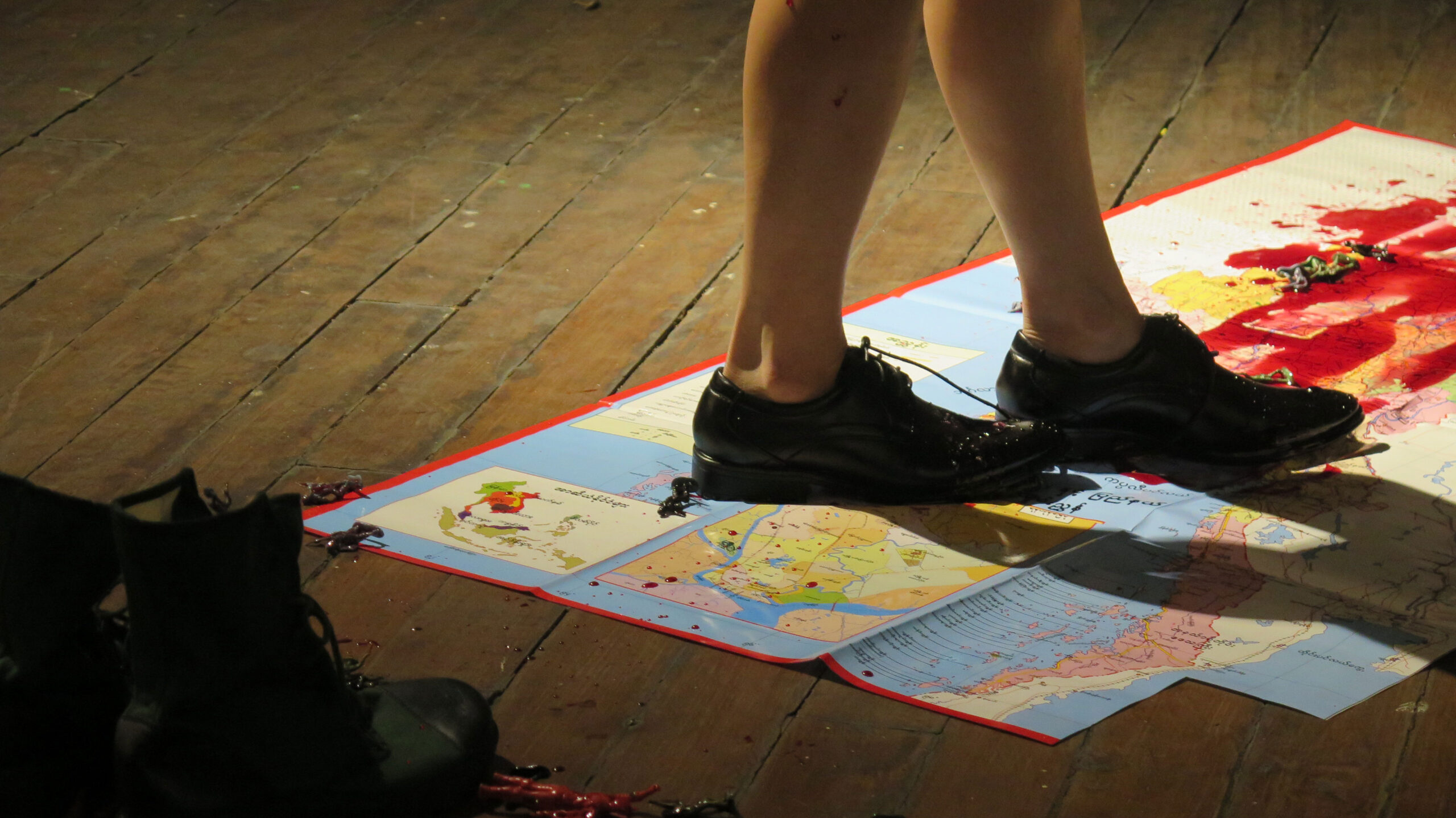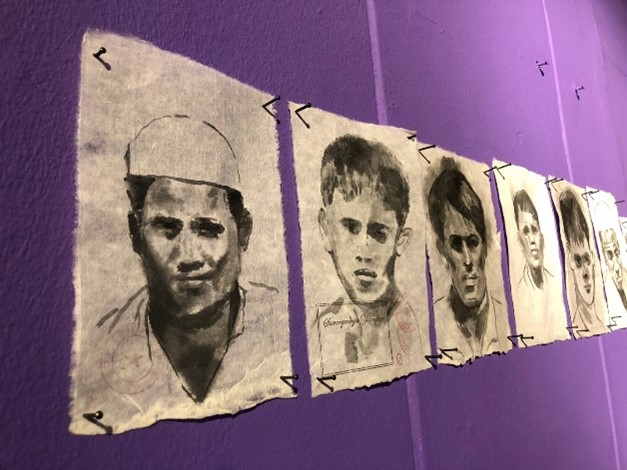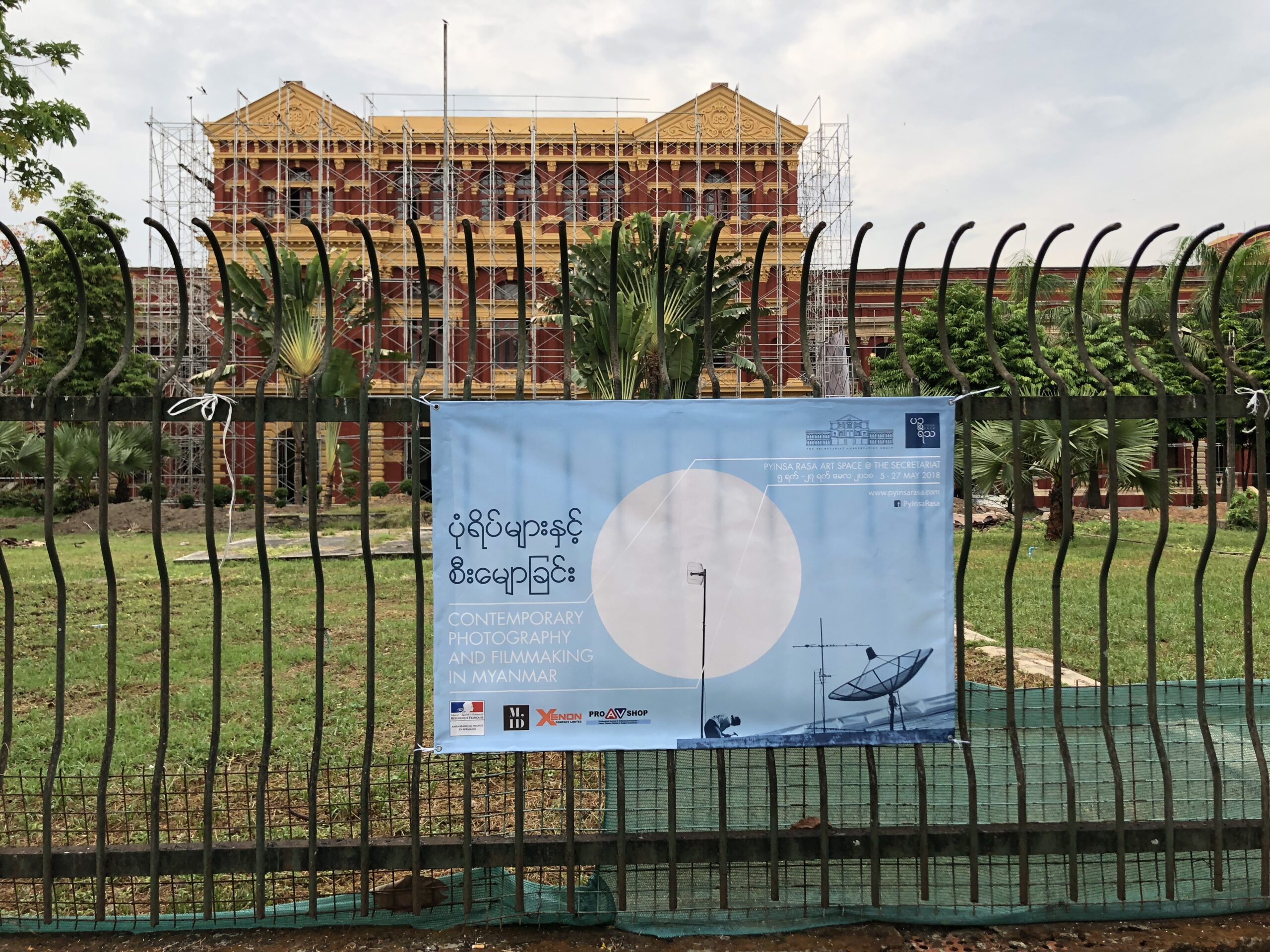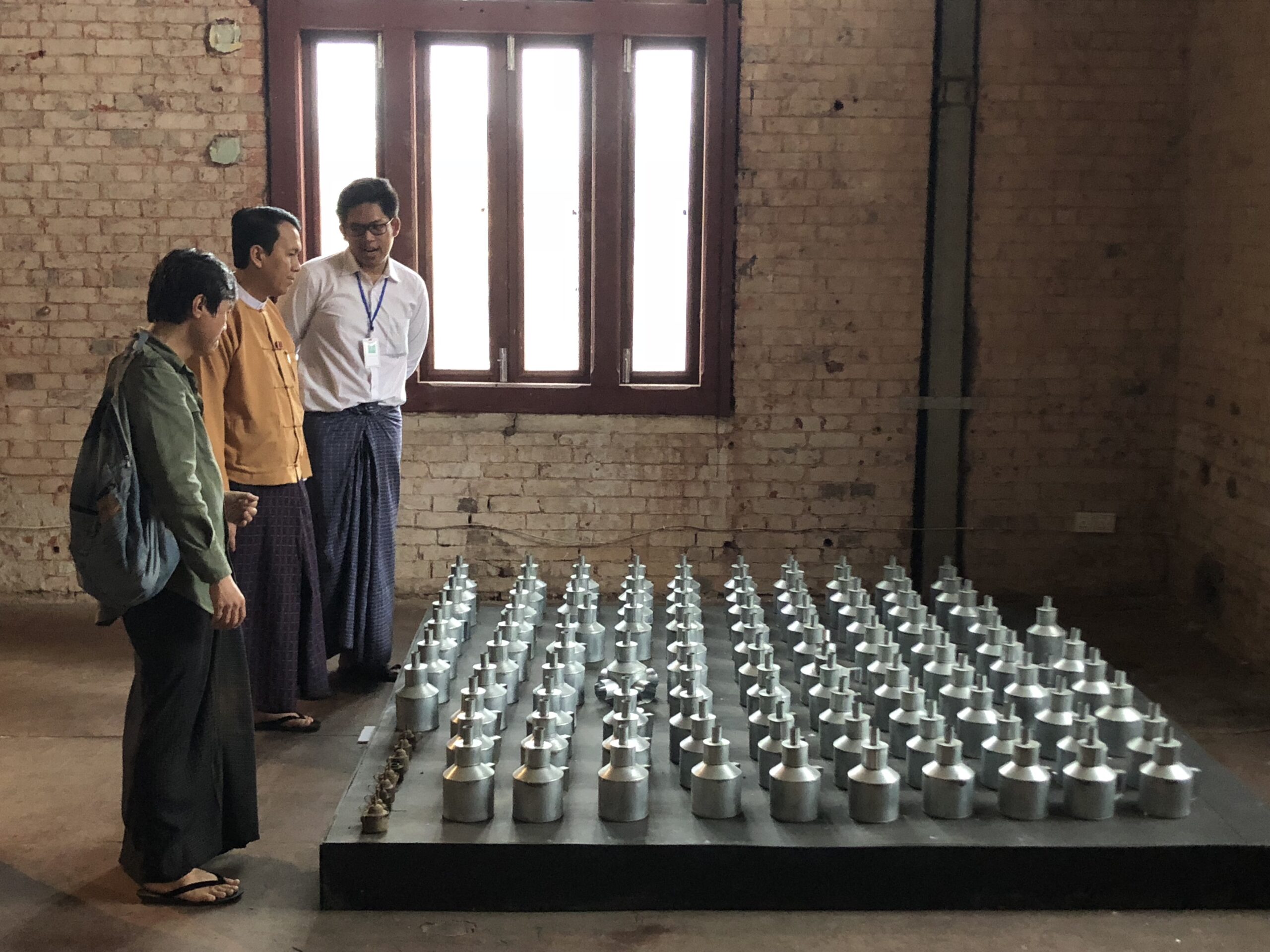When I originally conceived this essay in 2021, my goal was to confront and contextualise the term ‘transition’ in Myanmar. Burdened with international optimism about the fate of its putative democratic reforms and aspirations, Myanmar’s so-called transition of the last decade is like a mirage — imagined, perhaps seen, but never grasped.1
After the 1 February 2021 military coup, the word seemed like a cruel joke, mocking the last ten years as if they were a staged play. Yet the original idea for this essay stands as an example of what was actually happening, as opposed to what those outside Myanmar thought should happen. The artists were aware of this gap between expectation and reality. They held a candle for hope, but were under no illusion that the changes they had seen over the past decade were permanent. Life in Myanmar is cyclical, and historical events have repeated themselves in one way or another for over a century.
When I reflect on my reasons for moving to Myanmar to witness and be part of this ‘transition’, I know that my naivety both amused and frustrated the artists with whom I worked. For years, the projects at my gallery, Myanm/art in Yangon, addressed three distinct objectives: to record histories, to empower young and emerging artists through exhibitions and publications, and to create audiences drawn from myriad geographic locations and backgrounds. I largely achieved these goals, thanks to the hard work and cooperation of many artists and organisations. But did these projects need a ‘transition’ to succeed? Could they have been accomplished by the same means without the pressure or expectations of this so-called ‘transition’?
Of course, the transition did not create artists — they were already working. It simply provided them with more avenues to explore. Over the past decade, their artworks reflected a scepticism that society had undergone any permanent change, and artists of a certain generation were not convinced things would get better. Artists of all ages cautiously approached their practices with pragmatism. Knowing the risks, they pushed forward. One never knew where the line was until one crossed it, so they constantly experimented. It was not the outside world, whose ideas around ‘transitional democracy’, that compelled them forward. Rather, it was their familiarity with the rebuilt environment that allowed them to achieve all they did in the last decade — and that will help them to continue to create in the future.
It was 2009 when I began my research on the art and artists of Myanmar. The year before, it is estimated over 100 000 people died in Cyclone Nargis, the worst natural disaster in Myanmar’s recorded history.2 The year before that, thousands of monks had marched in towns and cities across Myanmar, as part of what is referred to as the Saffron Revolution, and many were killed by the military.3 Opposition leader Aung San Suu Kyi was still under house arrest at this time.4 The artists I met as part of my research — Nge Lay, Maung Day, Zoncy, Moe Satt, Po Po and many more — were experimenting in ways not widely known outside of the country. They also existed and created under extreme political pressure. In the past ten years, more opportunities arose to exhibit abroad, and better access to funding bolstered the art scene. The scope of work continues to address the challenges facing the country, including artists’ personal struggles, while approaches to art-making are motivated by self-expression in spite of censorship.
Myanmar artists are going through a process that is far more complex than international observers ever imagined. The word ‘transition’ signals a new beginning, but, in Myanmar, life is cyclical, reminiscent of the belief in reincarnation, which is held by a large majority of the population. Artists have been through multiple transitions, and some things have changed, while others have not. The rise and fall in the popularity of performance art from the early 2000s to the time of the 2015 general election is one such example.5 In terms of art production, performance art was a salve in the face of many restrictions. Expensive materials, lack of exhibition space and state-sponsored censorship encouraged the medium as an accessible alternative and it was popular for many years.
Arguably, the most vital sign of change in Myanmar’s art world after 2008’s Cyclone Nargis was the first international performance art festival in 2008, titled ‘Beyond Pressure’. Founded by Moe Satt, with support from fellow artists in Myanmar and South-East Asia, the festival’s most important action was the founder’s decision to approach the official censorship board at its Yangon headquarters to convince them to allow the festival to go ahead. This negotiation required extreme diligence as the board was comprised of bureaucrats from the ranks of Myanmar’s military.6
Performance art was not unknown in Myanmar at this time. Artists had been experimenting with the medium for ten years, thanks to workshops led by visiting artists — first, by Singapore-born Jay Koh in 1997, and then Japanese artist Seiji Shimoda, the following year. Moe Satt was a beneficiary of these workshops staged in the city’s art spaces. Beyond Pressure was a festival and a collective, and both explored new means of negotiating with the ultimate power of the military. It did not always succeed — the military denied the festival permission to perform in a public space in its first year. These experiences changed the way artists approached the curation and organisation of future events. They were the experts all along in the language of censorship, its limitations and its opportunities; therefore it was the artists who could best determine how to approach authorities, organise events, and manage the expectations of audience members when it came to challenging the role of censorship in the country. As time passed, the censorship board dissolved, and artists were in charge of their own fate.7 Artworks became more rooted in opinions and positions, but still subtle in their critique of change.
In 2013, Myanmar hosted the 22nd World Economic Forum on East Asia.8 Topics included infrastructure, defence and security, energy, financial services, agriculture, and foreign and national affairs. In attendance were several cohorts of Young Global Leaders (YGL), described as ‘remarkable individuals under 40’ committed to changing the world for the better.9 One cohort explored the artistic community of Myanmar and organised a series of talks and tours of art spaces and studios in Yangon. YGL invited performance artist Mrat Lunn Htwann to reflect on this historic gathering, and he proposed an idea — commission a beautiful and delectable cake made by the city’s high-end Strand Hotel, present it to the Young Global Leaders at one of the art talks, and invite them to admire the cake, built in the shape of the country and highlighting in decorative icing some of its primary resources, like jade and timber; however, the cake, displayed and admired, would never be served and never be eaten. YGL, whose presence in Myanmar signalled an interest in all that the country had to offer in terms of resources, would never be permitted to take part in the cutting and dividing of the cake/country. The proposal was rejected, officially due to expense, and the artist refused to propose another project in its place.10 This represented a small and largely unnoticed rebellious act in the early days of transition. The World Economic Forum cohorts and supporters saw their own presence as an opportunity, but many of the artists were uncomfortable with the idea that Myanmar needed saving, or, if it did, that foreign investors were the ones to do it.
Myanmar held its first democratic elections in 25 years in 2015, and in the lead-up, the anxious anticipation was tangible. For years prior, citizens were aware of the significance of these elections, and on 1 January 2015, artist Emily Phyo woke up with a plan — she would document every day of the year with a performance piece. Her commitment to a durational performance was the first of its kind among her peers. For all 365 days of 2015, she photographed a different person in Myanmar. Beginning with her friends, then moving onto colleagues and acquaintances, she posed them day and night, outside and in, wherever she happened to find them. Across their eyes, she tied a tape measure, not unlike the one she used in her own business, a tailor shop in a multistorey marketplace in Yangon. The number on the tape measure that sat at the bridge of the nose of the subject revealed their age. As part of the process, she recorded their name, occupation and the date of the photograph. The resulting collection of portraits represents the artist’s very own census of the people of Myanmar. She did not discriminate — she represented as many religions, genders and backgrounds as possible in her portraits. Her ideas about equality, and who represented Myanmar, turned out to be unique in the country and among its artists.11
Aung San Suu Kyi’s party won in a landslide victory in the 8 November election, and in the government’s first year (2016–17), the military violently cracked down on Muslim minority groups in Rakhine State, in response to an attack on border police.12 A newly formed armed group claimed credit for the attack, but tensions between Muslim Rohingya and Buddhist Rakhine, which dated back to the 1970s in the region, were already high.13 Both groups have suffered long-term disenfranchisement at the hands of the Burmese military, and tensions have led to much death and the displacement of over a million people.14 This period was yet another black mark on the record of the Myanmar military and government, but, perhaps for the first time, also on the people of Myanmar as there was little outrage on behalf of citizens.
The attitudes of ordinary people towards the Muslim minorities, and specifically Rohingya people, were shocking, and many artists shared their viewpoints. Working in Myanmar for seven years up to that point, I found these reactions vexing and not a true reflection of those I knew. Having just opened Myanm/art in 2016, I did not want to ban artists from the space or force conversations on topics that clearly inspired such vitriol. Instead, Myanm/art continued to operate as an open space for dialogue, and in time, the artists expressed their anger, despair and confusion about the crisis through their work.
In 2017, artist Ma Ei set up for her performance at the ‘She/Her/Hers’ exhibition at Myanm/art.15 Wearing an army green dress, she spread a large map of Myanmar on the floor in front of a chair. A pair of standard-issue army boots sat on top of the map, while she sat on the chair and held in her lap a bowl of pink, syrupy liquid, the kind that flavours desserts and soft drinks. Inside the bowl were tiny plastic toy soldiers. As she shovelled a few in her mouth, the syrup dripped from her lips, and then suddenly, she spat them out onto the floor in front of her. The syrup had the appearance of blood, sprayed over the map of Myanmar. She repeated this act many times, the sickly, sweet smell of the syrup choking the air of the gallery. The title of her work Why is the military still in Parliament? 2017 was potent, but her actions held much more meaning, reflecting on the ongoing civil wars across the country, as well as the constant presence of soldiers in the lives of the people of Myanmar. Reflecting on the performance at the time, I concluded that outrage takes many forms. In Myanmar, where each generation suffers from its own unique version of post-traumatic stress disorder, reactions to violence are varied, complex and always changing.
As more opportunities to exhibit and travel meant a growing interest in object-based work, performance art diminished in popularity around this time. Perhaps the expressive and emotional needs that once motivated body-based art were waning. Now artists looked to photography, installation, painting and ceramics. It seemed the time for performance-based art had passed, and interest in more permanent mediums grew with the changing tides of politics in the country.
Sawangwongse Yawnghwe’s delicate ink on handmade paper works entitled Rohingya Portraits 2017 featured in the exhibition ‘A Beast, A God and A Line’, which travelled to Yangon in 2018. The portraits shocked the artists there. Questions swirled about the background of the artist, and how Myanm/art managed to display them without any repercussions.16 Discussion then focused on the portraits’ humanity, the importance of the series, and, ultimately, how the series was an example of how such topics could be addressed in Myanmar without being viewed as divisive.17
Curated by Htein Lin, ‘Seven Decades’, also 2018, is arguably the most important exhibition of the last ten years in Myanmar. Commissioned by the Yangon-based art collective Pyinsa Rasa, ‘Seven Decades’ was held in Yangon’s historic Secretariat building, an imposing, colonial-era structure taking up a full city block. The building is both sacred and forbidden. Aung San Suu Kyi’s father, who was instrumental in Burma’s independence from British rule, was assassinated there in 1947, and ever since, it has been occupied by various government offices, military and police forces, closed altogether to the public, or, as some say, haunted by ghosts. In 2018, the newly elected city government was more open than any previous administration to public art exhibitions.18 Pyinsa Rasa received permission from Yangon city for the exhibition, which featured 19 artists whose work reflected — uncensored — on the past 70 years in Myanmar. Interestingly, none of the artists chose to work with performance art. Most chose installation, and their subjects ranged from political cartoons to civil war, public protest to prison time. It was not only the artworks that emphasised the historic nature of the exhibition, it was the artists selected to participate. Most had been in prison at some time and all were senior and widely respected practitioners.19
Phyo Min Thein, Yangon’s Chief Minister, attended a private viewing of the exhibition. He spent hours watching the video works, especially relating to the artworks about prison time; he shared a cell with Htein Lin in the early 2000s. (It is important to reiterate this fact here: an elected government official attended an uncensored art exhibition reflecting on 70 years of Myanmar’s history, which was staged in a previously forbidden building.) ‘Seven Decades’ embodied much of what Myanmar’s transition meant to the artists involved — space and time to reflect on the past, a luxury not previously afforded due to long decades of instability.
In 2022, the 19 artists who exhibited in ‘Severn Decades’ are scattered — exiled, deceased or silenced. Phyo Min Thein is again in prison, forced by the military to testify against Aung San Suu Kyi in October 2021 in a corruption trial.20 Yangon is reeling from months of protests, which have now turned into a series of guerilla bombings and shootings.21 In the wake of the 1 February 2021 military coup, artists are galvanised, and there has been a return to performance art, this time via digital platforms. The trio of artists Yadanar Win, Ko Latt and Ma Ei, who call themselves 3AM, found that their greatest weapon against the military, and its supporters, was in telling the story of the country through their bodies. Commissioned in 2020 by the QAGOMA for ‘The 10th Asia Pacific Triennial of Contemporary Art’, the resulting video performance Construction and Deconstruction 2021, produced during the coup, was more relevant to the current times, though the concept remained largely the same since the time of its commission more than a year previous.22 The context shared by the artists is not one of shock, surprise or suspicion. There is a preparedness in their vision — they know this context because they have experienced it before.
And so the cycle continues. A new transition begins in Myanmar and, for the artists, the adjustments and adaptations never end.
With the end of censorship in 2012 came the assumption that artists’ creative expression would explode to critically examine the past, present and future. This thinking also took for granted that such art was not already being produced. There was change, progress and even great works — but none of it seemed to meet the expectations of those outside Myanmar looking for both a new artistic frontier and a thriving art market in Asia. As the ground shifted under their feet, artists found ways to shift with it, not to meet others’ expectations, but to navigate the muddy waters of change — for themselves.
